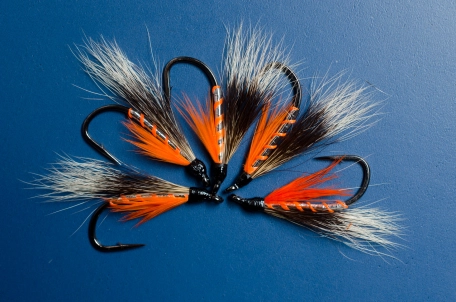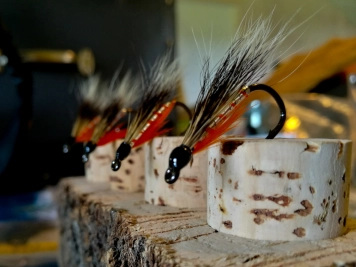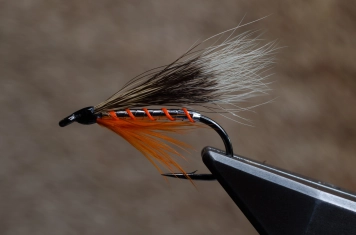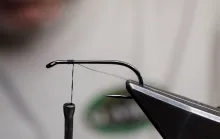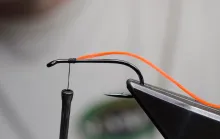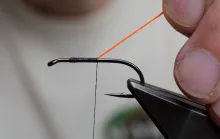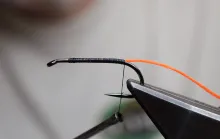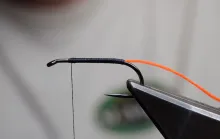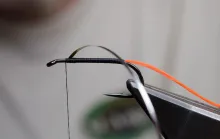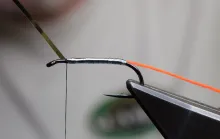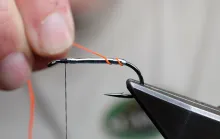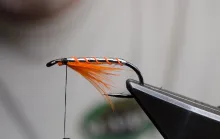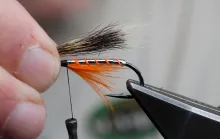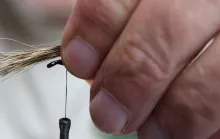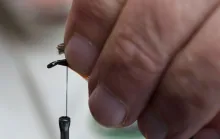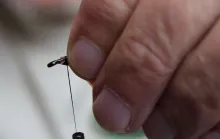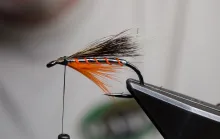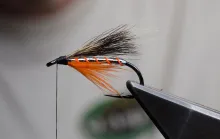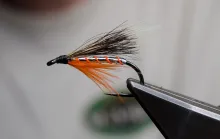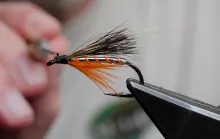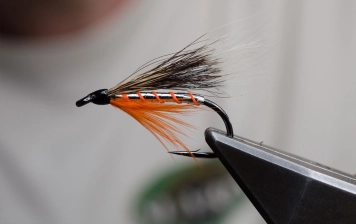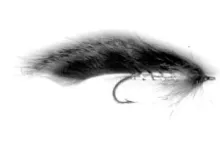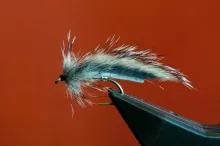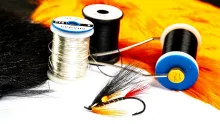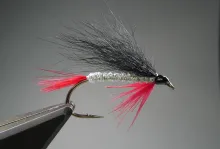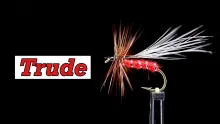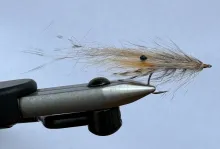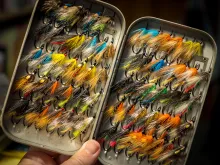This is a simple streamer, which was one of the first decent flies I ever put together myself. I still like it and enjoy tying it.
This fly didn’t have a name until 10 minutes before I started writing this.
I always just called it the Squirrel Streamer because that’s what it is: a simple streamer with a squirrel wing. But since the name Squirrel Streamer isn’t exactly something that sets it apart from any other squirrel streamer, of which there are many out there, I decided to call it something a little more snazzy.
Now, coming up with fly names isn’t something I do regularly. Most of my own flies never get named, and when I have been involved in naming flies, something has almost always been given, and naming has been quite straightforward. I did hear of a fly tyer who regularly comes out with new patterns, who simply comes up with good and catchy names without having a fly to give it to. He then puts the names in a jar, and picks out one whenever he needs one for a new pattern.
As I said:
my array of new patterns that deserves a name is quite short, and I haven’t felt the need for such a jar. But right here, with this little brown/silver/orange streamer I thought that a less generic name than “Squirrel Streamer” would be in place before publishing it.
The fly is in all its simplicity a silver body, an orange rib, a squirrel wing and an orange false hackle. It’s the orange trim that catches the eye, and in an attempt to find some inspiration I typed the words “orange trim” into Google and searched the virtual world for something useful. Needless to say that I didn’t really find anything. The lack of success made me consider the simple search words as a name. Orange Trim. Cool name, actually. So after more than 25 years this fly now has a name.
Martin Joergensen
Here is the
old squirrel streamer from back when I was a very new fly tyer. As I said: it’s a simple streamer, easy to tie. It’s a very efficient fishing fly, which has taken sea run browns as well as freshwater rainbows.
Even though hair wing streamers have never been my favorite type of flies, this particular one has a stiff squirrel wing, which keeps it from opening in a characteristic – and unbecoming – scissoring motion where the wing is horizontal and the hook hangs below it. I never fancied that, and have always been annoyed by the soft wing streamers behaving like that.
When fished fast or in a current most hair winged streamers behave well, but when stripped in through still water like the coastal water that we fish here, the soft wing separates from the hook, which hangs in an unflattering angle under the fly. Me no like!
But with a stiffer wing,
this fly doesn’t quite have that problem. A bit when it’s wet, but not much.
The fly is a no-nonsense fly to fish.
It's basically foul free, easy to cast and can be fished as you please it: fast or slow. Its colors and silver body invites to use it in turbulent and murky water, but I have had fine fishing in clear water using the fly. I fish it on my usual intermediate shooting head, but it can be fished on a floating line too. I have tied the version shown here on the fairly heavy Ahrex Deep Sea streamer hook, which brings it down. Using a lighter hook such as the Kamasan B170 or the cool, black Kamasan 840B will make it a much lighter and slow sinking fly. I prefer flies with some weight.
The fly does a fine job of imitating a small stickleback, a fish that is high on the sea trout menu.
|
|
|
|
|
|
|
|
|
|
|
|
|
|
|
|
|
|
|
|
|
|
|
|
|
|
|
|
Martin Joergensen
Hand picked for this article
- Log in to post comments

